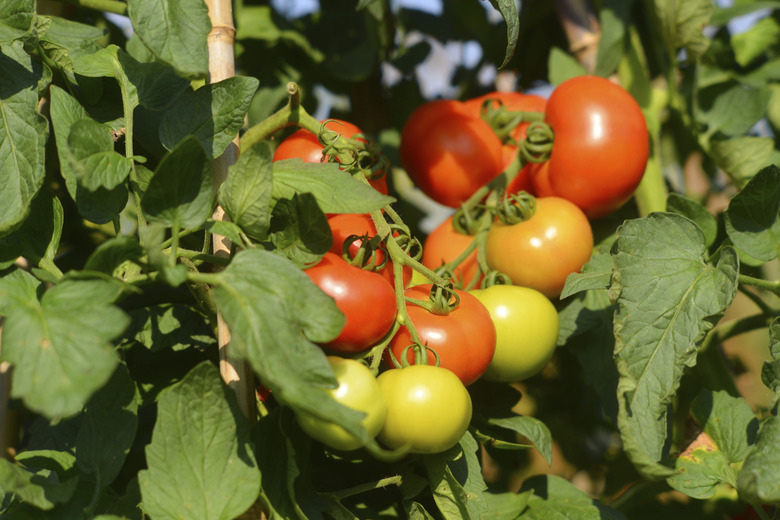Using Diatomaceous Earth To Control Tomato Plant Pests
We may receive a commission on purchases made from links.
Use diatomaceous earth for tomatoes (Solanum lycopersicum, USDA zones 10-11) as a form of organic pest control. This natural, nontoxic substance won't hurt children or pets, but it will kill some of the pests that can quickly destroy this beloved warm-season plant. Because food-grade diatomaceous earth also kills beneficial insects, only apply diatomaceous earth to clear infestations of harmful pests when growing tomato plants. Store any unused portion in an airtight container placed in a dry area.
How Diatomaceous Earth Works
How Diatomaceous Earth Works
Diatomaceous earth is an abrasive dust made from the crushed silica-rich shells of diatoms, a type of prehistoric crustacean. The sharp edges of each particle puncture insect shells and absorb the protective waxy coating on the outside of insects' bodies. As a result, insects become dehydrated and die. Additionally, insects that ingest diatomaceous earth suffer reproductive disruption, along with digestive and breathing problems that kill the pests. Diatomaceous earth works best in dry conditions when pests are most likely to become thoroughly covered in the dust.
Applying Diatomaceous Earth
Applying Diatomaceous Earth
Don't confuse food-grade diatomaceous earth with the stuff used to filter pools. That form of diatomaceous earth is chemically treated and poses a risk to your respiratory system. Even though the food-grade material is safe, wear a dust mask while applying diatomaceous earth to tomato plants. Although diatomaceous earth is nontoxic to humans, it can irritate your mucous membrane if you inhale the particles.
Use diatomaceous earth for tomatoes by applying a thin layer of dust around the base of each tomato plant. Add the dust to a bulb puffer to control foliage-dwelling pests such as aphids by coating the tomato plant's foliage, including leaf tops and undersides. Know that diatomaceous also kills honeybees, so avoid dusting it on your tomato plants when they're flowering.
Although you can apply diatomaceous earth at any time, dusting the plants right after it rains or while the tomato plant is still dewy helps the dust stay in place. Reapply the diatomaceous earth after it rains or if you no longer see it on top of the soil or foliage. This organic pest control product is generally most effective when you can see that it's present.
Controlling Tomato Pests
Controlling Tomato Pests
Before you use diatomaceous earth for tomatoes, be sure that the insect you've seen is actually a harmful pest. It can kill beneficial insects that help naturally control the harmful pests that destroy tomato plants.
Use diatomaceous earth to control these pests that commonly affect tomato plants:
- Aphids
- Cutworms
- Flea beetles
- Hornworms
- Nematodes
Diatomaceous earth can also help control:
- Caterpillars
- Leaf hoppers
- Thrips
- Flies
- Mildew
- Gypsy moths
- Codling moths
- Pink boll weevils
- Mosquitos
- Earwigs
- Twig borers
- Mites
- Cockroaches
- Lygus bugs
Common Tomato Plant Pest Problems
Common Tomato Plant Pest Problems
Watch for signs of a pest infestation by inspecting the plant's foliage every few days. Some common pests and the damage they leave behind include:
- Tomato hornworms: eat holes in foliage
- Nematodes: cause bumps that prevent the plant from performing photosynthesis or absorbing nutrients
- Aphids: cause distortion, discoloration, and curling of the tomato plant's leaves
- Tomato fruitworms: chew small holes into tomatoes that can destroy the fruit if left untreated
